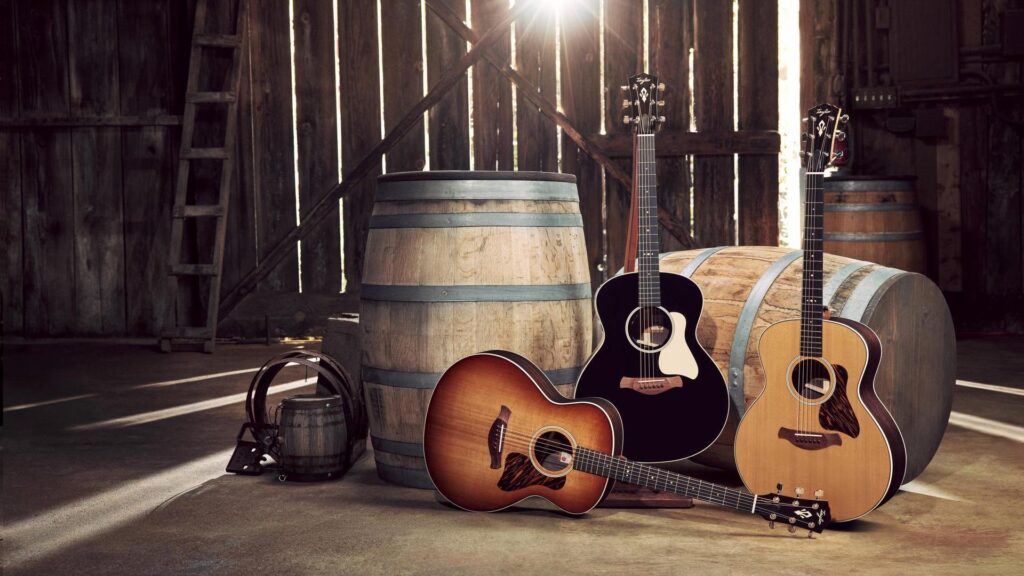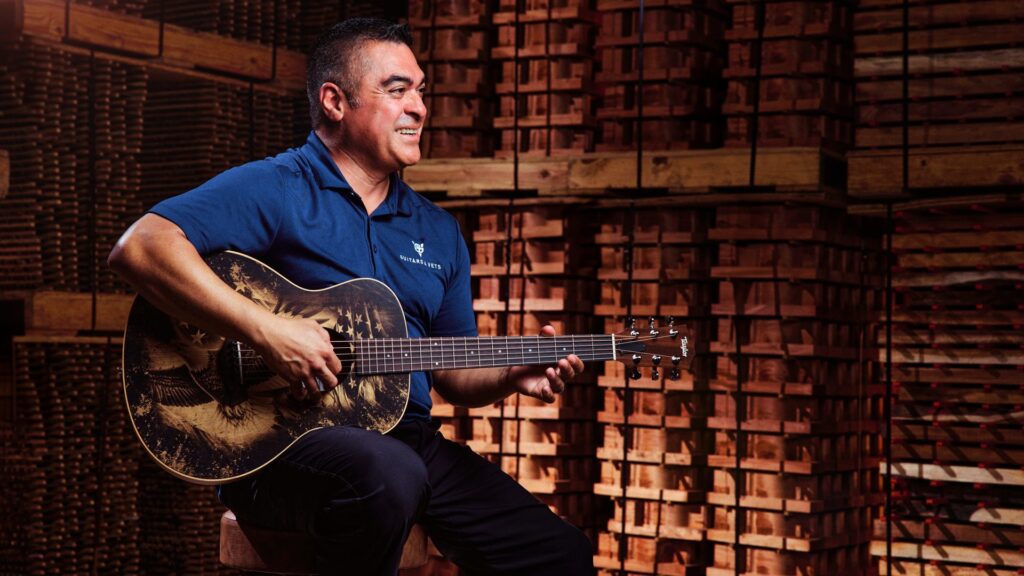Remember the first acoustic guitar you picked up? The effort it took to form those first chords? The thrill when you cleanly nailed your first progression? If you haven’t gotten there yet, don’t worry, it’s never too late to start. Especially now that we have introduced our Academy Series Guitars, the perfect learning guitars.
Your first guitar can make or break your experience. It can spark a lifelong musical journey or make you throw in the towel. We hate to see people give up because we think playing music is good for the soul. That’s why we designed our Academy Series guitars.
Arguably the biggest reason that new players give up is a sub-par instrument. Forming those first chords is hard enough. Add a guitar with high action, bad intonation or cruddy sound to the mix, and the odds of sticking with it aren’t good.
“When you’re first starting out, you need everything going for you,” says Taylor master guitar designer Andy Powers, the creative architect of the Academy Series. “In many respects a beginner deserves the best-playing guitar.”
The design goal was to make a full-size, full-featured Taylor guitar more accessible to anyone with an interest in playing. Andy and Taylor’s product development team worked hard to remove all the barriers that get in the way of a good introductory experience, from feel to sound to cost. That last factor, cost, was an important consideration. While Taylor already enjoys a widely acknowledged reputation for making high-quality guitars, the design challenge was to distill the idea of a great guitar into its most essential form to make it budget-friendly.
And that’s often the rub for some guitar newbies — or parents buying for their kids. They might be reluctant to pony up for a more expensive, “nice” guitar without knowing whether the interest will stick. The safe approach is to start with an inexpensive, “good enough” guitar, and if things progress, upgrade to something better. But all too often this ends in hand-wringing frustration, as would-be musicmakers walk away blaming themselves for lacking musical talent or physical dexterity when the true culprit was the guitar.
Related: How Much Should I Spend For My First Acoustic Guitar?
Defining the Ideal Entry-Level Learning Guitars
Creating the design framework for the Academy Series was simple: Andy listed all the essential qualities he felt the ideal learning guitar should offer and ruled out the extraneous details. In his pursuit of design simplicity, he drew inspiration both from guitar-making icon Leo Fender and Charles and Ray Eames, whose iconic furniture designs helped define the Mid-Century Modern aesthetic.
“The whole premise behind the Telecaster when Leo Fender designed and built it was to get more guitar from the simplest ingredients of design and material,” Andy says. “It’s simple, and yet functions very well for a musician. Charles and Ray Eames were known for saying, ‘We want to make the best for the most for the least.’ These ideas summarize what we hoped to achieve with these guitars. The intention was to give players the ‘most’ acoustic guitar from solely the essential elements of design and material.”
Based on Andy’s list, the Academy Series had to deliver on these fronts:
> The Playing Experience
The body needed to be comfortable and lightweight. The guitar needed to be as easy to strum and fret as possible. This suggested a guitar with a shorter scale length, light-gauge strings, low action and a narrow neck. Nylon strings were also a consideration because of the lighter string tension. An armrest for extra playing comfort was another possibility.
The guitar also had to respond with a rewarding sound without demanding a lot of skill or finesse. Some guitars are capable of producing great sound but require the touch of an experienced player to draw it out.
> Practical Considerations
The guitar couldn’t be too precious. That would make it intimidating for a novice to play and care for. It also needed to feature simple design elements, durable construction, and be easy to maintain. And it had to be affordable enough for a beginner to be willing to buy it.
> Musical Applications
It had to be a guitar, or series of guitars, that could cover a broader range of music preferences. There had to be options for playing with a pick, fingers, and possibly a nylon-string option.
Taking Shape
With a clear design blueprint in place, Andy was able to craft the Academy Series guitars to match his minimalist inspiration.
“There’s nothing here that doesn’t need to be here,” Andy says. “As a result, we ended up with guitars that are tremendously functional. They play wonderfully and sound remarkably good.”
Andy feels confident that the Academy Series learning guitars will make a welcoming first impression to anyone who picks one up.
“It’s important to give a beginning player the most comfortable, gratifying experience,” he says. “If the guitar is comfortable, plays well, and has a pleasing sound, then a player will have an easier time staying with the instrument.”
Andy also notes that while the Academy Series learning guitars was conceived to appeal to beginners, the rewarding nature of the playing experience translates into even broader appeal.
“These same playing benefits can be enjoyed by seasoned players who simply aren’t in a position to devote serious financial resources on an instrument,” he says.
Find out more about the Academy Series, Learning guitars and explore models here.




